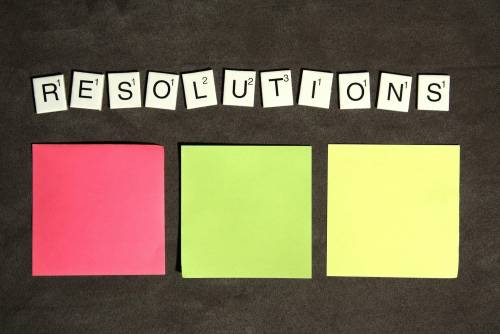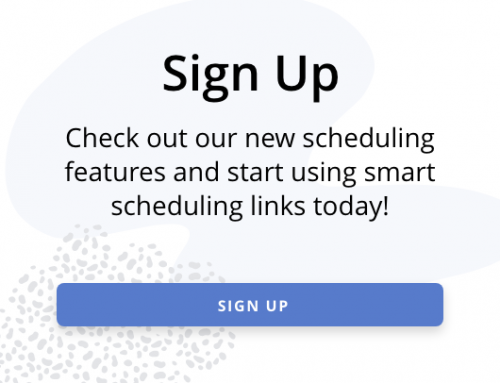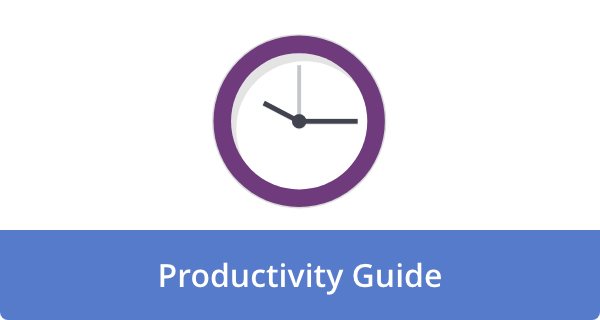

We’ve all been there. It’s January 1, and we’re making bold resolutions — eat healthier, save more, exercise more, spend less time on screens. It is common, however, for those goals to seem distant by the time summer rolls around. This is why New Year’s Resolution Recommitment Day is observed annually on June 1. With refreshed energy and clarity, it’s the perfect midyear checkpoint for setting, reflecting on, and reigniting your goals.
But remember. It’s okay if your resolutions have failed. You’re not alone. According to research, about 80% of people abandon their New Year’s resolutions by February. The truth is that long-term change rarely follows a straight path. As Recommitment Day reminds us, progress is always possible, and success is not about never falling off track but about getting back on it.
This article will discuss why this day is so important, why resolutions fail, and how to build a powerful midyear recommitment strategy that works.
Why This Midyear Recommitment Isn’t Just a Good Idea, It’s Essential
New Year’s resolutions are often ambitious, well-intentioned declarations. So, it’s rare for them to fail because they are inherently bad ideas. They often die out because “life gets in the way.” Our schedules become unexpectedly chaotic, our motivation wanes naturally, and unforeseen challenges or tempting distractions arise. However, you do not have to abandon your goals because of these interruptions.
Recommitment Day is about acknowledging perfection as an illusion and devising a plan to move forward. It’s like a second chance at a new beginning, arriving at a time when you have invaluable real-life data to work with. By now, you have a good idea of what works (even if just briefly), what doesn’t, and what you are willing to change about yourself.
Don’t underestimate the power of momentum. It requires consistent effort, not flawless execution. It’s not just saving your resolutions now; you’re also setting yourself up for success at the end of the year, potentially surpassing even your initial goals. We aren’t just catching up; we are accelerating this midyear reset.
The Five Ghosts of Resolutions Past: Why Our Best Intentions Derail
To help us craft our comeback plan, let’s briefly examine the common culprits that sabotage our New Year’s resolutions. By understanding these patterns, you can avoid them between now and the end of the year.
1. Vague goals: The “be better” trap.
For actionable progress, phrases like “get fit” or “be more productive” lack specificity. You can’t measure progress if you don’t define what “productive” or “fit” means to you. It’s like taking a road trip to a new location without a map — or most likely, GPS.
2. Unrealistic expectations: The all-or-nothing overhaul.
January often inspires grand visions of transformation in every aspect of life. However, when you try to overhaul your diet, fitness, finances, and relationships at the same time, you are almost certain to be disappointed. Although big goals are inspiring, they must be broken down into smaller, manageable, and sustainable steps.
3. Lack of a system: Relying on motivation alone.
Having a goal is like having a destination, but having a system will help you reach it. Even the strongest initial burst of motivation will inevitably fade without established routines, supportive tools, or ingrained habits. The only way to form a new habit is to create a supportive structure that allows you to do so.
4. All-or-nothing thinking: The single slip-up spiral.
A trap like this is particularly insidious. When a person misses a workout, eats an unhealthy meal, or incurs an unexpected expense, they perceive it as a failure. When rigid mindsets are present, people often give up on their goals rather than simply correcting their course and moving forward.
5. No accountability: The secret struggle.
When you keep your goals to yourself, there is little external pressure or support to motivate you. In our human nature, we are inclined to give up when no one is watching. Sharing aspirations, tracking progress, or engaging with a community can create positive social pressure and invaluable encouragement to achieve your goals.
Recommitting with Confidence: Your Midyear Master Plan
The purpose of Recommitment Day isn’t just to dig out that dusty list from January 1. It’s about approaching your goals more wisely, more intentionally. With this step-by-step framework, you can redefine, refine, and reinvigorate your resolutions for lasting success.
Step 1: Take stock of the year’s first half without judgment.
During this initial phase, you should be honest with yourself, not critical of yourself. You may want to find a quiet place and ask yourself the following questions, writing your answers without filtering;
- What were my original New Year’s resolutions or key goals for the year? Put them all in a list.
- What tangible progress have I made so far? Wins are important, no matter how small. For the past week, have you exercised? Have you saved an extra $20? These small victories should be celebrated.
- Where did I genuinely struggle, and what caused those struggles? Is it a lack of time? Are you overwhelmed? Is the goal unrealistic? What are the external challenges? Be kind and honest at the same time.
- What significant changes have occurred in my life since January 1st? Do you have a new job? Is it a family event? Unexpected expenses? These shifts can have a dramatic impact on your capacity and priorities.
Understanding the dynamics of the first five months will better prepare you to shape the second half of the year more effectively and sustainably.
Step 2: Reevaluate your goals — quality over quantity.
Some goals you set in January are not worthy of being revived verbatim. It is possible that some may no longer resonate with your current values, or that your life circumstances have genuinely changed. And that’s okay. After all, it indicates growth and adaptability.
As such, for each goal, review the following criteria:
- Is this goal still truly meaningful to me? Is there still a spark of desire, or does it contribute to my long-term goals?
- Does it have a specific and measurable outcome? How can I define success clearly? A good example would be “Walk 7,000 steps daily,” not “Get fit.”
- Is it achievable within the next six months? You need to be realistic about your current capacity and the timeline.
- Does it excite or energize me? If setting a goal feels like a chore, you’re unlikely to achieve it.
After completing this assessment, clarify your top 2–3 most compelling goals. You can, for example, replace “eat healthier” with a specific goal, such as: “Cook dinner at home four nights a week.” “Save money” can be replaced with something more specific, like: “Transfer $100 to a high-yield savings account every Friday.”
In short, instead of making a long list, focus on a few powerful intentions.
Step 3: Rather than just establishing a destination, create a system.
In my opinion, this is the most important step. There is a difference between a goal and a system, which is a repeatable process that helps you reach your goal. Rather than just declaring your goal, take action every day or every week to achieve it.
If your goal is to read more, your system might involve “reading 10 pages of a book before bed every night.” Or, if your goal is to get fit, your system might involve “scheduling three 45-minute strength training sessions every Sunday for the following week.”
To support your systems, consider these practical tools;
- Habit trackers or journals. It can be very motivating to visualize your progress.
- Accountability partners or coaches. You get positive pressure and support from someone who checks in with you.
- Time-blocking or reminder apps. Put reminders throughout your day to help you stick with your new habits.
- Weekly check-ins. Every Sunday, take 15-30 minutes to review your progress, celebrate victories, and adjust your system for the week.
To succeed, it must be as effortless as possible. Reducing friction will increase your chances of achieving your goals.
Step 4: Tap into the power of declarations by publishing (or at least sharing).
Some people prefer to keep their goals private, but declaring your intentions, even to a small group of trusted individuals, has a powerful effect. If you have a supportive friend or family member, let them know. Consider joining an online community or group focused on similar goals. Nevertheless, if sharing your intentions on social media motivates you, consider doing so.
When others know what you’re trying to accomplish, you’re more likely to follow through. This isn’t about avoiding judgment; rather, it’s about improving accountability and creating a powerful support network.
Step 5: Ensure flexibility with a resilience protocol.
Here is where the wisdom from the year’s first half truly shines through. Life is unpredictable by its very nature. Unexpected travel, illness, sudden burnout, or unavoidable last-minute obligations are all curveballs you can expect. Failure is not the result of these disruptions.
Expect them.
Build recovery plans into your strategy rather than viewing these moments as complete setbacks. It is not necessarily the end of your week if you miss a single workout. Weeks of healthy eating cannot be undone by a single day of less-than-ideal food. Resilience is what separates sustainable progress from rigidity — the ability to acknowledge mistakes, forgive yourself, and adapt without losing direction.
Midyear Motivation: A Powerful New Frame
On June 1st, we do not have to start over from scratch, but rather apply the hard-earned lessons we’ve learned so far. To fuel your recommitment, consider these powerful mindset shifts;
- “I’m not starting over—I’m starting wiser.” The past attempts weren’t failures; they were learning experiences.
- “I’ve learned what doesn’t work. Now I’ll strategically try what might.” Take advantage of your data!
- “I don’t need to be perfect. I just need to be consistent enough.” For long-term change, good enough is often better than perfect.
- “Small wins now, consistently compounded, can add up to genuinely big changes by December.”
10 Actionable Ideas Worth Recommitting To
Is your recommitment in need of some inspiration? Here are a few examples of focused, actionable goals you can adopt, adapt, or use as a springboard;
- Physical well-being. Attempt to walk 7,000 steps a day, five days a week (easily tracked with a phone or fitness device).
- Mental well-being. Make a point to write down your gratitude in a journal three times a week (e.g., Sundays, Tuesdays, and Thursday evenings).
- Nutrition. At least four nights a week, cook dinner at home.
- Financial health. Transfer $50 (or $100) to a high-yield savings account every Friday.
- Personal growth. Every month, read one physical or e-book.
- Morning routine. Every three mornings, wake up 30 minutes earlier to spend quiet time (reading, meditating, planning).
- Digital Detox: Limit social media usage to 30 minutes a day (use your phone’s screen time controls).
- Connection. Call or send a thoughtful message to one friend or family member each week to keep in touch.
- Mindfulness. Use a guided app to meditate for 10 minutes every morning.
- Skill development. Before August ends, complete one online course or certification to improve a professional skill.
Remember to keep it simple, focused, and achievable. Realistic goals are those that can be realistically integrated into your everyday life, not idealized ones.
Final Thoughts: It’s Never Too Late to Author Your Own Success Story
New Year’s Resolution Recommitment Day, which takes place on June 1st, is not the time to reminisce about past mistakes. It’s about taking advantage of a powerful opportunity. Even though the year is halfway through, it’s not over yet! If you reflect honestly, create a smart strategy, and remain committed to consistent action, the next six months could be your life’s most meaningful, productive, and healthy.
To initiate change, you don’t need a new calendar year. All you need to do is make a new decision. It’s about embracing wisdom gained, forgiving past errors, and recommitting to the future.
Now that you’ve taken a deep breath, let’s revisit the aspirations you once had. Don’t forget to tweak what needs to be tweaked. Make small, recommitted steps forward.
FAQs
What is New Year’s Resolution Recommitment Day?
This informal yet increasingly recognized observance encourages individuals to recommit to the goals they set for themselves at the start of the year. During this time, we reflect on progress, identify obstacles, and renew our resolve to reach our goals. As messy as life is, losing focus is a regular part of the journey, but getting back on track is important.
When is New Year’s Resolution Recommitment Day?
New Year’s Resolution Recommitment Day is observed each year on June 1st.
There is a strategic reason for choosing this date. By June 1st, we are nearly halfway through the year, so we have ample time to assess what has (or hasn’t) happened. We are far enough into the year for the initial “newness” of resolutions to have worn off, making it an ideal time for a realistic reevaluation.
What is the purpose of New Year’s Resolution Recommitment Day?
New Year’s Resolution Recommitment Day aims to provide a structured opportunity for self-reflection. As a result, it serves several important purposes;
- Acknowledge and reset. By acknowledging your lapse in resolution, you can forgive yourself without feeling guilty. The new year provides an opportunity for a “fresh start.”.
- Assess progress. Reflecting on what you have accomplished, even small victories, you can look at where you stand with your goals.
- Identify obstacles. What might have caused you to fall off track — was it lack of time, unrealistic goals, insufficient support, or unexpected life events?
- Reignite motivation. In revisiting your “why,” you can rekindle your initial motivation.
- Adjust and refine. During this time, you can ensure your goals and action plans are more realistic, specific, and achievable for the rest of the year.
- Promote long-term success. By conducting a mid-year check-in, you are more likely to achieve your New Year’s Resolutions, transforming good intentions into sustained progress.
Where did New Year’s Resolution Recommitment Day come from?
Ancient civilizations such as Babylonia (which made promises to their gods at the beginning of their new year in mid-March) and the Romans (who sacrificed to Janus, the god of beginnings and transitions) started the tradition of making New Year’s Resolutions thousands of years ago. However, New Year’s Resolution Recommitment Day is a much more recent, informal celebration.
Its exact origins are unknown. Nevertheless, it appears to have emerged in recent decades due to the widely recognized difficulty of keeping resolutions. As a result of the fact that many people abandon their goals early in the year (January 17th is unofficially known as “Ditch New Year’s Resolution Day” or “Quitter’s Day”), New Year’s Resolution Recommitment Day was designed to provide a positive counterpoint – an opportunity to get back on track and reclaim your ambitions. Overall, it emphasizes that personal growth is not a one-time event, but a continuous process.
What are the benefits of recommitting to your goals mid-year?
On New Year’s Resolution Recommitment Day, or anytime during the year, recommitting to your goals offers numerous advantages;
- Increased chance of success. By revisiting and reengaging, you significantly increase your chances of achieving your goals.
- Flexibility and adaptability. You can refine your goals as your circumstances change or you gain new insight. You might have set an ambitious goal, or perhaps your priorities have changed. With mid-year check-ins, you have the flexibility to adjust and create a more realistic and relevant plan.
- Reduced guilt and overwhelm. By doing so, you are liberated from feeling like a failure. Instead, it offers a fresh start, reducing mental strain that leads to quitting.
- Momentum building. Even small steps can build powerful momentum following recommitment, facilitating progress.
- Enhanced self-awareness. By reflecting on your patterns, challenges, and true motivations, recommitment creates greater self-awareness.
- Better goal setting in the future. When you practice mid-year adjustments, you set realistic, manageable goals and plans for the following year.
- Long-term personal growth. Self-improvement is a continuous process, not just a one-off event, encouraging a mindset of self-improvement and resilience.
Image Credit: Breakingpic; Pexels











John Rampton
John’s goal in life is to make people’s lives much more productive. Upping productivity allows us to spend more time doing the things we enjoy most. John was recently recognized by Entrepreneur Magazine as being one of the top marketers in the World. John is co-founder of Calendar.